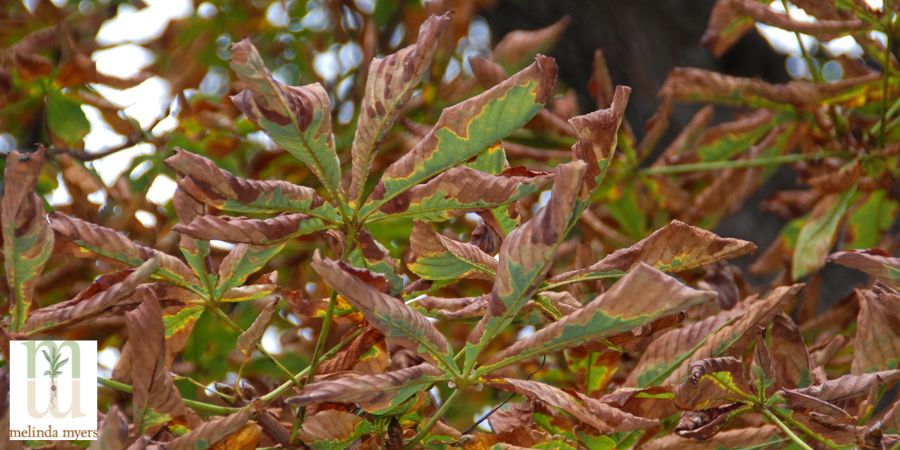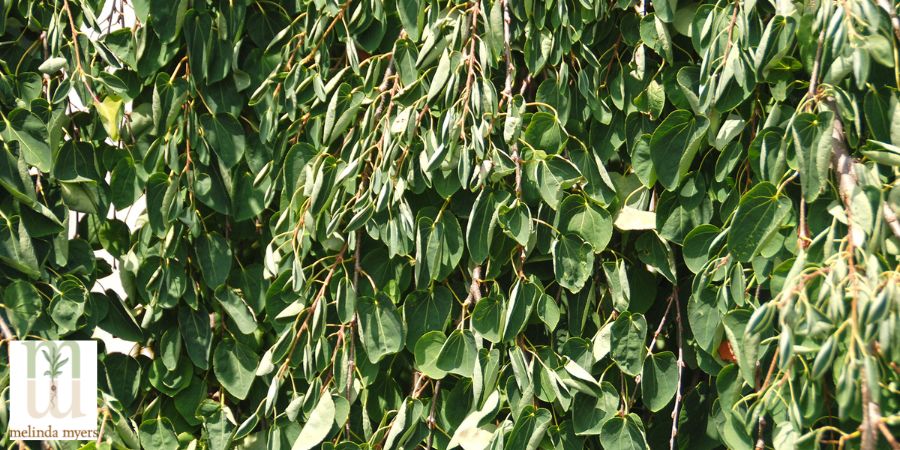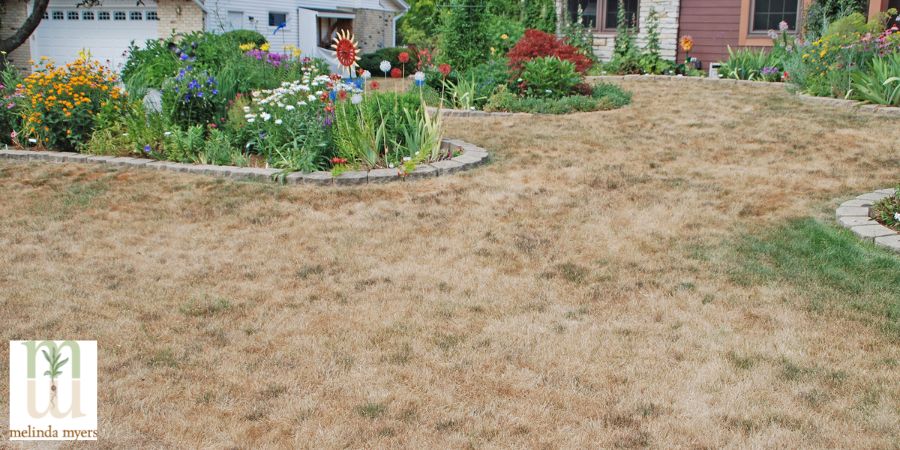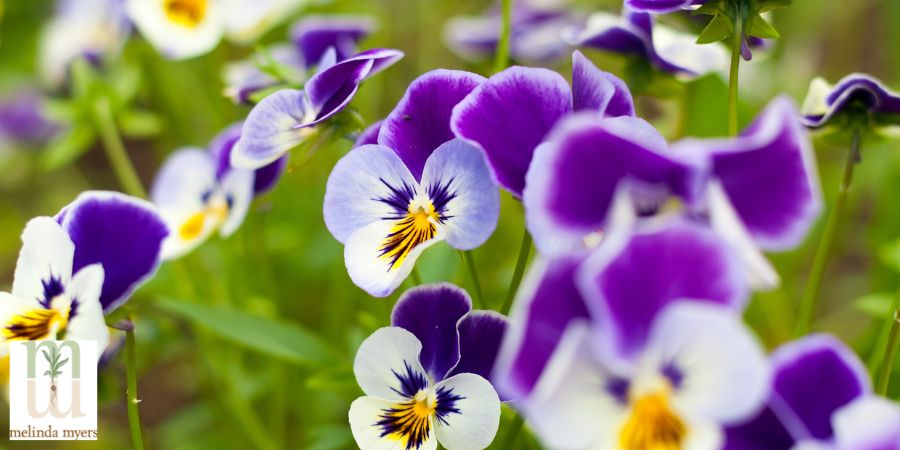Summer Landscape and Garden Care
- horticulturist and gardening expertJuly 23, 2022
It has been another hotter than normal summer for many parts of the country. Record temperatures and droughty conditions have taken a toll on our gardens. Understanding how plants respond to these stressful conditions allows us to provide proper summer garden care.
Plant Heat Stress
Most plants grow best when temperatures are 59 to 86˚ F (15-30˚ C). When temperatures are above 90˚F (32˚C) for long periods the plant growth slows (except it seems for those weeds) and plants begin to show signs of stress. Those gardening in areas with very hot summers has discovered heat tolerant plants suitable to those growing conditions.
Heat-stressed plants often roll or cup their leaves to reduce the amount of leaf surface exposed to reduce moisture loss. Dry leaf edges are another way some plants deal with heat stress. Although it looks bad the rest of the leaf is still alive and producing energy to support the plant. You may also notice shortened peak bloom times on plants flowering during extremely hot weather. Some plants drop flowers and fruit to conserve needed resources for the plant’s survival. This is common in peppers, squash, and cucumbers. Tomato flowers won’t develop into fruit when the temperatures are too high.

Scorch on Aesculus
Reduce heat stress by providing shade for struggling plants until temperatures return closer to what is more typical. Move heat-stressed containers to a shady spot or an east location sheltered from the afternoon sun. Use a bit of screening or shade cloth to provide relief from the heat for sensitive in-ground plantings.
Be patient when heat-sensitive plants like annual lobelia and calendulas stop flowering. Provide these heat-stalled plants with needed water and wait for cooler conditions to return.
Mulch the soil to help keep plant roots cool and moist while suppressing weeds. Leaves, evergreen needles, and other organic mulches not only moderate soil temperature extremes but as they break down, they help improve the soil. Organic matter increases the soil's ability to absorb and retain moisture so you need to water less often.
Try watering early in the day whenever possible. Less water is lost to evaporation and plants are hydrated before the heat sets in. Check new plantings and small containers often. Always water thoroughly to encourage deep roots that will be more drought tolerant.
Keep in mind plants wilt during hot dry weather to conserve moisture. If they do not perk up as temperatures cool in the evening or morning, they may be receiving too little or too much water. Adjust your watering practices as needed.
When fertilizing plants consider using Milorganite, low nitrogen, slow-release fertilizer. This fertilizer will not burn when temperatures rise but rather stay in the soil until the moisture and temperatures are right for plant growth.
Landscape Drought Stress
Heat and drought stress symptoms often appear the same. Drought stress occurs when plants lose more moisture through transpiration than is available to absorb from the soil. You’ll notice cupping and curled leaves that do not recover during the cooler evening and morning hours. The leaves may be smaller than normal and the leaf edges turn yellow or brown.
Let the weather, soil, and the plants you are growing determine your watering schedule. High temperatures and fast-draining soils dry out quickly and the plants will need more frequent watering. Cooler temperatures and slow or poorly drained soil stay moist longer. Established trees with larger root systems and drought-tolerant trees need less frequent watering than moisture lovers and new plantings.
Always water thoroughly as needed to encourage deep more drought-tolerant roots. Whenever possible, use soaker hoses and drip irrigation to apply water directly to the soil. It makes your job easier, uses less water, and reduces the risk of plant disease.
Prioritize plants by watering requirements, location in the landscape, and cost to replace, when water restrictions are in place or your time is limited. In extreme drought conditions, you may be forced to let some of the lower priority plants die. Although it is a sad situation consider it an opportunity to add more drought tolerant low maintenance plants to your landscape. The University of California provides helpful tips for prioritizing the watering of landscape plants in drought-stricken locations.
Remember to water trees and shrubs, even old established ones, when extended dry periods and droughts move in. These plants take years to reach maturity and are expensive to replace.
Water deeply, moistening the top 12 inches of soil under the dripline of deciduous trees; and the same depth, but three to five feet beyond the dripline for evergreens.
Apply 10 gallons of water for every inch diameter of the trunk. For example, a 4-inch diameter tree should receive about 40 gallons of water each week.

Drought Stressed Katsuratree
You can apply the water with a soaker hose, encircling the tree and covering the area under the dripline. Or make your own drip irrigation system with 5-gallon buckets. Drill several holes in the bottom of the buckets, set them around the tree, and fill with water.
Add or refresh the mulch under and around trees and shrubs. A layer of organic mulch conserves moisture, suppresses weeds, and keeps weed whips and lawn mowers away from the tree trunks.
Consider waiting until temperatures cool and regular rainfall returns to make new additions to the landscape. Create a holding area for these plants. Group new purchases together in a sheltered location and cover the pots with mulch to conserve moisture and reduce time spent and water used to keep them alive.
Reduce water use and time spent managing these plants with a few changes in your landscape. Plant moisture-loving plants together in the yard. You will concentrate high water use on a smaller area of the landscape and spend less time watering. Further, reduce watering by replacing moisture-loving plants with those that are more drought tolerant.
Summer Lawn Care
If you water your lawn during the hot dry months, water thoroughly and only when needed. Lawns need watering when the grass blades turn a gray-green color or your footprints remain when walking across the lawn.
Reduce water use by mowing high to encourage deep drought tolerant roots. Leave clippings on the lawn adding moisture, nutrients, and organic matter to the soil. Make sure your mower blade is sharp. A sharp blade makes cleaner cuts that close more quickly. Your lawn will look better and lose less moisture. A sharp blade reduces the lawn’s water use by up to 30%. Your mower will also use up to 22% less fuel and you’ll save time mowing as the sharp blades quickly cut through the grass.
Save water and allow your lawn to go dormant during hot dry weather. You will end up with a few more weeds but use much less water. Allow the lawn to remain dormant until cooler temperatures and rains return. Lawns taken in and out of dormancy with irregular watering are the most stressed and less likely to recover.

Drought Stressed Lawn
Do provide lawns with 1/4 inch of water once a month during extended droughts. This keeps the crown of the plant alive without breaking dormancy. Further, protect your lawn by minimizing foot and equipment traffic that can injure the drought-stressed grass. And do not apply weed killers and high nitrogen fast-release fertilizers to the lawn in summer. These chemicals can damage your lawn during hot weather. Plus, new weeds are the first to replace those the herbicide killed.
Proper fertilization will increase your lawn's ability to survive the stresses of heat, drought, and pests. Use Milorganite, a low nitrogen slow release fertilizer, that encourages slow steady growth that is more drought tolerant and this fertilizer won’t burn the lawn during hot dry weather.
Adding Beauty to Summer Stressed Landscapes
Move one or more of your planters into the garden. It showcases your container, provides additional vertical interest, and helps freshen up a struggling garden. Or create new containers specifically for this purpose. Elevate container gardens growing in decorative pots so both the container and plants add beauty to the garden.
Sink a few hanging baskets into the ground to create an instant garden. The surrounding soil helps insulate the roots so you will need to water less often. Or set them on an old chair, leaky birdbath, or plant support to allow the flowers to cascade to the ground adding vertical interest to your planting beds.
If you still have a few empty spaces consider adding a bit of garden art. A child’s wagon, metalwork, or old window frame can provide a bit of whimsical beauty to any garden border. Just take a walk through the garage or shed to see if you have any interesting items that can be upcycled into garden art with the help of paint, glue, and your imagination.
Reviving the Beauty of Summer Stressed Gardens
When temperatures and rainfall return to more normal patterns consider sprucing up the landscape with some immediate and long-lived additions
Purchase some large flowering annuals from your local garden center. These are perfect for replacing heat-stressed annuals and adding instant color to garden beds and containers. Many garden centers carry larger annuals for just this purpose. Keep in mind these will need more frequent watering until they become established.
Include annuals that will bloom throughout the fall. As temperatures drop the garden center is filled with cool weather annuals. Many provide nectar for late-season pollinators. Hardy pansies are a great addition to the fall garden and make an excellent winter flower in warmer regions. Some of the hardier varieties survive even in zone 4 winters and return in spring.

Pansies
Dianthus, stock, snapdragons, and sweet alyssum also thrive in the cooler fall and for some gardeners winter weather. Add these to containers or use them to fill any remaining voids in the garden. Get these late plantings off to a good start with MIlorganite. One application of this slow-release fertilizer will provide all the nutrients your plants need to thrive throughout the remainder of the growing season.
Plant perennial flowers for multiple years of beauty. Consider those with several seasons of beauty and nice foliage all season long. Look for features like long bloom time, attractive seedpods, and fall color. Walker’s Low catmint, threadleaf coreopsis, sedums, and calamint are a few examples of long blooming, low-maintenance plants. End the growing season with flowers like goldenrod, mums, and asters or colorful fall foliage from perennial geraniums, hostas, and Amsonia. Include some ornamental grasses such as Northwind and Shenandoah switchgrass, little bluestem, and prairie dropseed that add motion and texture to the garden all year round. Look for more drought tolerant plants that will need less water once established.
Dress up the garden with a few decorative squash and pumpkins. Just set them in the garden among perennials and flowers. They’ll cover those problem areas and no one has to know, but you. Be sure to add them to the compost pile at the end of the season if you do not want your garden filled with squash and pumpkin plants next year.
Include trees and shrubs to provide a year-round structure in the garden. Look for those with colorful or interesting bark like ninebark, crape myrtle, and Heptacodium that provide year-round interest. Look for flowering shrubs like St John’s wort, Diervilla, hydrangeas and repeat blooming lilacs.
Set the fall landscape ablaze with chokeberries, witchhazel, and maples. And brighten up the winter landscape with the colorful fruit of holly, winterberry, crabapples, and hawthorns. Include plants like Harry Lauder’s walking stick, Pagoda dogwood, redbud and weeping trees that provide interesting form all year round.
Always make sure the plants you select are hardy to your region and tolerate the growing conditions in your landscape. Look for drought tolerant plants if summer drought is common in your area. Selecting the right plant for the growing conditions means healthier better-looking plants that require less care.
When you get tired of planting take a bit of time to look through bulb catalogs and bulb company websites. Order your spring flowering bulbs like tulips, daffodils, and hyacinths now for the greatest selection. Those in milder climates will need to purchase pre-cooled bulbs or varieties that require minimal winter chill to flower in the spring.
Just store them in a cool dark place until you are ready to plant.
Wait for the soil to cool to begin planting spring flowering bulbs. This is usually mid to late fall after a hard frost when night temperatures are consistently between 40 and 50 degrees but before the ground freezes. Pre-cooled bulbs get planted in late winter or early spring.
These spring-blooming bulbs will get your landscape off to a beautiful start and provide nectar for early pollinators. Mix them among your perennials to double the floral impact of spring flowering perennials or extend the bloom time of summer and fall blooming flowers. You’ll also reduce maintenance since the perennials help mask the bulb’s declining foliage. Select animal-resistant daffodils, hyacinths, squills, and grape hyacinths if deer, rabbits, and squirrels have been a problem in the past.
Once all your plant additions are in the ground be sure to provide a bit of tender loving care. Water thoroughly whenever the top few inches of soil are crumbly and moist. Spread a layer of shredded leaves, evergreen needles, or wood chips over the soil surface to conserve moisture, suppress weeds, and keep the roots cool and moist. Keep mulch off the crowns of plants and trunks of trees.
Take care of yourself this summer as well. Drink lots of water, wear sunscreen and a big, brimmed hat, garden in the morning, evening, and in shady spots whenever possible, and take frequent breaks. Taking care of yourself and your plants when temperatures rise will help ensure a healthy growing season.

